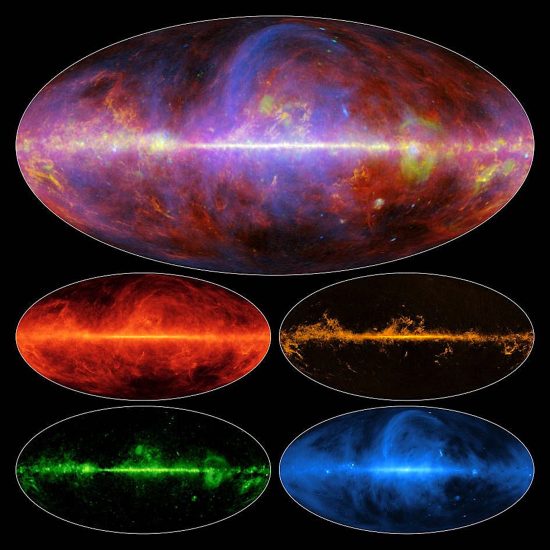
Dec 20, 2019
Astronomers are baffled by galactic morphology and evolution.
What generates galactic magnetic fields? What gives those fields their shape and their strength? Using computer simulations, astronomers think they found the answers. “Cool gas falling into galaxies,” supernovae explosions, star formation, and rotational energy are what they believe create the fields. However, they must be missing certain factors, since the models are not able to predict what is actually observed.
George Ellery Hale first plotted the Sun’s magnetic field (as a representative star) using the “Zeeman effect,” or the change in position of Fraunhofer lines found in spectrograms of the Sun. By spreading starlight into its components like a prism does to white light, dark lines at specific places provide a way to determine a star’s constituent elements.
In the presence of an electromagnetic field, elements produce spectral lines that split and occupy different positions. Those changes in position are called the “Zeeman effect”. It is not surprising that the magnetic field contours surrounding stars, as well as those seen around galaxies, remain unexplained in the minds of those who hold to a consensus viewpoint. In their theories there is no electricity to provide the source for that magnetism.
Instead, “star formation reducing turbulent energy,” “gas ejection,” and “how fast ordered magnetic fields arise from random ones” are discussed. No electromagnetism, no electric fields, and no motor-generator effects are included in their calculations.
Magnetic fields in space can be detected more easily than electric currents, so researchers believe that the fields are “primordial” fragments left over from the Big Bang. They rely on that conclusion to explain how the structures that make up the Universe were formed.
The fact that moving charges constitute an electric current that can generate magnetic fields has been known since the days of Michael Faraday. However, a lack of knowledge often means a lack of vision. As previously stated, moving charged particles constitute an electric current, and that current is wrapped in a magnetic field. When more charged particles accelerate in the same direction, the field gets stronger. That is a familiar idea to electrical engineers, but when astronomers find moving charges in space they are mystified and refer to them as “winds,” or “shock waves.”
Something else not considered when researchers attempt to explain structure in the Universe is that for charged particles to move, they must move in a circuit. Energetic events cannot be explained by local conditions, alone. The effects of an entire circuit must be considered. For that reason, while the consensus scientific worldview only permits isolated “islands” in space, the Electric Universe emphasizes connectivity with an electrically active network of “transmission lines” composed of Birkeland current filaments.
Stephen Smith
The Thunderbolts Picture of the Day is generously supported by the Mainwaring Archive Foundation.












